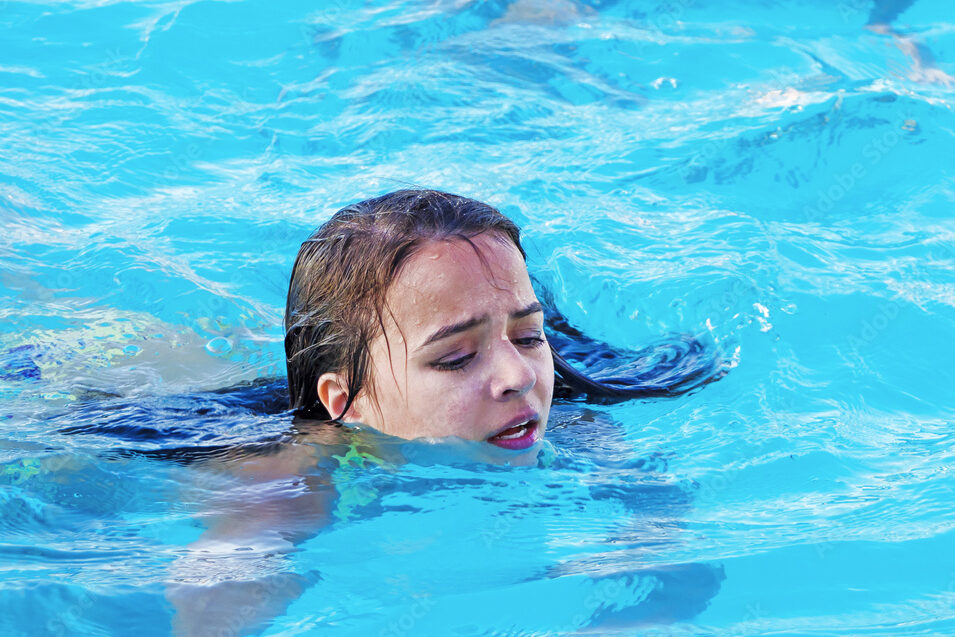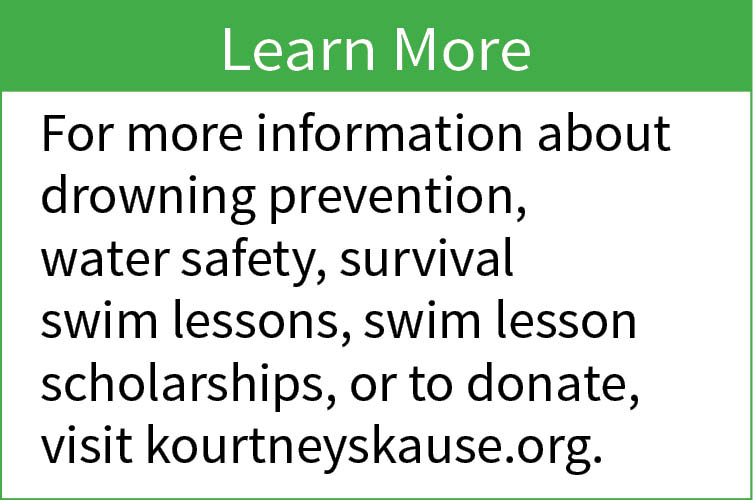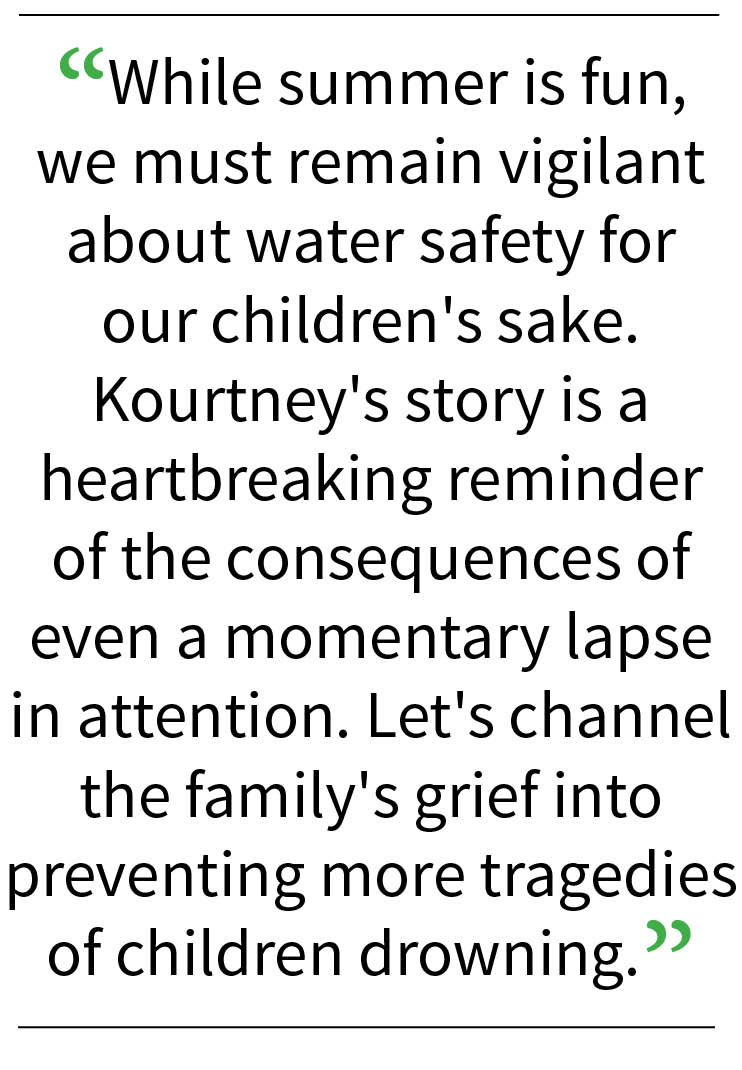Children should be taught that they need permission before entering the water,
![]()

This editorial is the opinion of Morgan Hill Life
July 15 marked six years since Morgan Hill resident Kristina Andrews tragically lost her 3-year-old daughter, Kourtney, in a drowning accident at a friend’s pool party.
 The local nurse turned her grief into action by starting a nonprofit called Kourtney’s Kause, dedicated to drowning prevention and water safety education.
The local nurse turned her grief into action by starting a nonprofit called Kourtney’s Kause, dedicated to drowning prevention and water safety education.
With the hot days of summer in full swing and families going to the beach or cooling down in backyard pools, Andrews’ message is an important reminder for all parents and caregivers.
Drowning poses a significant risk, especially for young children, but there are steps we can take to prevent these tragedies.
Ensuring constant adult supervision around water is crucial — drownings often happen quickly and silently, even when adults are present.
Assign a designated watcher, never let children swim alone, and install proper barriers like fence locks around home pools. Parents should also learn CPR, with a focus on techniques for drowning victims.
But supervision isn’t enough. Survival swim lessons can teach kids as young as six months to flip onto their backs and float if they fall in, buying precious time for rescue. Thanks to Kourtney’s Kause scholarships, hundreds of local kids have learned these lifesaving skills. Wider access to affordable swim lessons should be a priority.
Events with lots of people present an even greater risk, as Andrews notes: “It’s when everybody is watching and nobody is watching.” Even a brief lapse in attention can be fatal.
In a recent report, the National Drowning Prevention Alliance compiled these drowning statistics on children from the Centers for Disease Control and World Health Organization
-
88 percent of child drownings occur with at least one adult present.
-
Drowning is the leading cause of death in children ages 1 to 4 and the second leading cause of death in children and teens ages 5 to 15.
-
The U.S. loses the equivalent of 10 full school buses worth of children to unintentional drownings per year, with the average school bus seating 80 students, resulting in an average of 854 children per year.
-
For every child who dies from drowning, another seven to eight receive emergency department care for non-fatal drowning. Almost 70 percent of drownings of young children occur during non-swim.
-
Two out of three drowning incidents that take place in the home occur in a bathtub.
-
23 percent of child drownings happen during a family gathering near a pool.
Advice provided by Kourtney’s Kause includes prioritizing survival swim lessons as early as possible for children as a safety measure. (These lessons can begin as early as six months.) Also, be sure children and teens use properly fitting life jackets in or on open water. And parents and caregivers should become CPR certified.
 The group also recommends assigning a designated water watcher, even if there is a lifeguard present.
The group also recommends assigning a designated water watcher, even if there is a lifeguard present.
Children should be taught that they need permission before entering the water, and they should never enter the water alone.
If you have a pool, ensure you have locks and alarms on all doors and windows leading to the pool area. Pools should also be surrounded by a pool fence that is self-closing and self-latching, made of a mesh material that cannot be easily climbed.
While summer is for fun, we must remain vigilant about water safety for our children’s sake. Kourtney’s story is a heartbreaking reminder of the consequences of even a momentary lapse in attention. Let’s channel the family’s grief into preventing more tragedies of children drowning.
Groups like Kourtney’s Kause show us we can make a difference if we act together.
We owe it to our kids to keep them safe when they play in the pool or in a lake and ocean.
Let’s all stay vigilant about water safety not only during summer but all year long.






